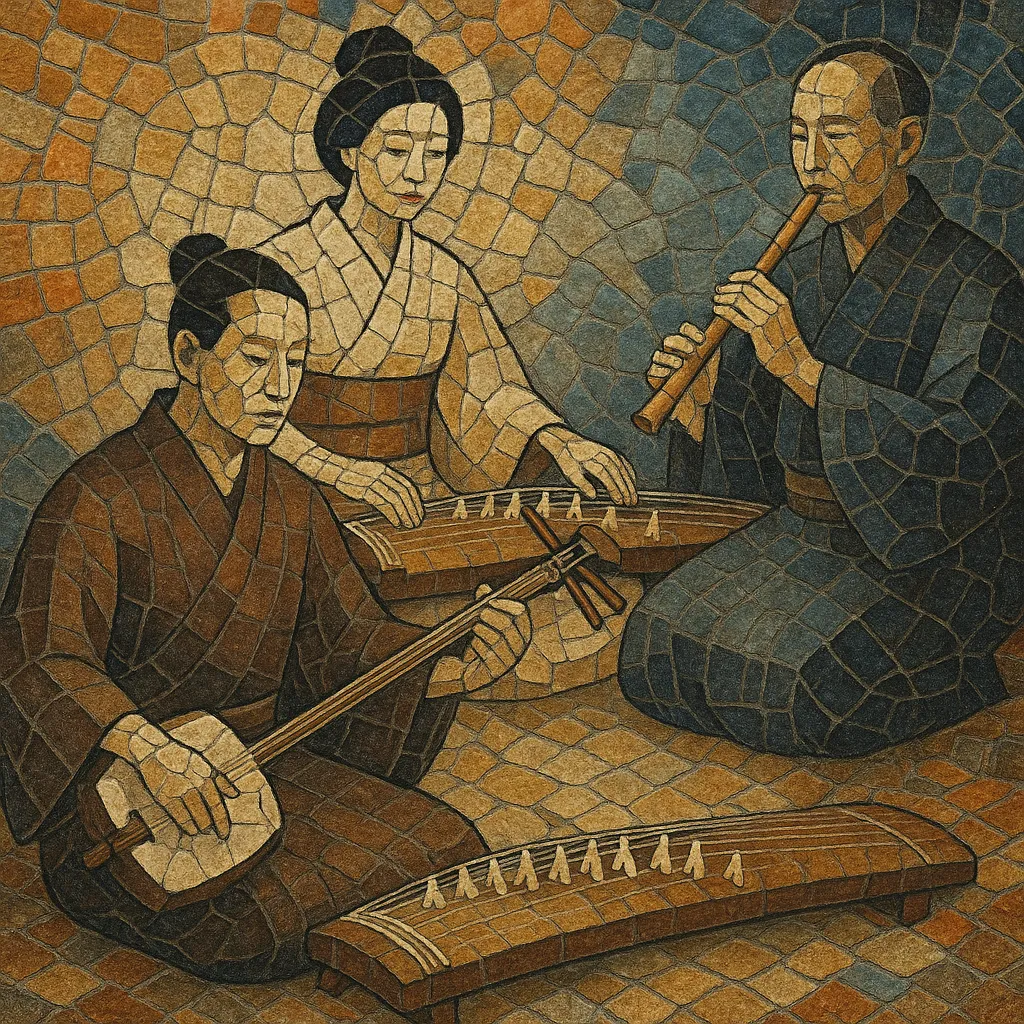Jiuta (地歌) is a refined chamber vocal-and-instrumental genre from Japan’s Kansai (Kamigata) region, centered on the shamisen and often performed in the sankyoku ensemble with koto and shakuhachi (originally kokyū). It emerged in the early Edo period among professional blind musicians (kengyō) and emphasizes nuanced vocal delivery, subtle ornamentation, and flexible phrasing.
Pieces range from lyrical utamono (song-centered works) to tegotomono, which intersperse sung sections with substantial instrumental interludes (tegoto) showcasing intricate shamisen and koto technique. Typical performance aesthetics follow the Japanese jo–ha–kyū arc (introduction–development–rush to conclusion), favoring measured tempos, timbral delicacy, and poetic texts imbued with seasonal imagery and wistful sentiments.
Jiuta took shape in the early Edo period (17th century) in the Kamigata (Kyoto–Osaka) region. It was cultivated largely by blind professional musicians organized in guilds (notably the Tōdōza), who codified repertory, pedagogy, and performance practice. The shamisen—adapted from the Ryukyuan sanshin—became its core instrument, often paired with koto and, historically, kokyū, forming the nucleus of what became the sankyoku chamber ensemble.
Across the 18th and 19th centuries, jiuta diversified into lyrical utamono and the more structurally ambitious tegotomono, where instrumental interludes (tegoto) display contrapuntal interplay and idiomatic techniques for shamisen and koto. Composers associated with the Ikuta-ryū and later Yamada-ryū schools helped stabilize forms, tunings, and repertoire, while the ensemble gradually favored shakuhachi in place of kokyū. The aesthetic ideal emphasized jo–ha–kyū pacing, refined ornamentation, and poetic texts.
From the Meiji period onward, jiuta persisted in both concert and pedagogical contexts, recorded and transmitted by prominent masters. While newer genres and theater traditions (e.g., nagauta) flourished alongside it, jiuta remained a cornerstone of classical shamisen practice and sankyoku performance. Today, conservatories, traditional schools (ryū), and Living National Treasures continue to maintain and perform the repertoire, keeping its intimate, contemplative ethos alive.


